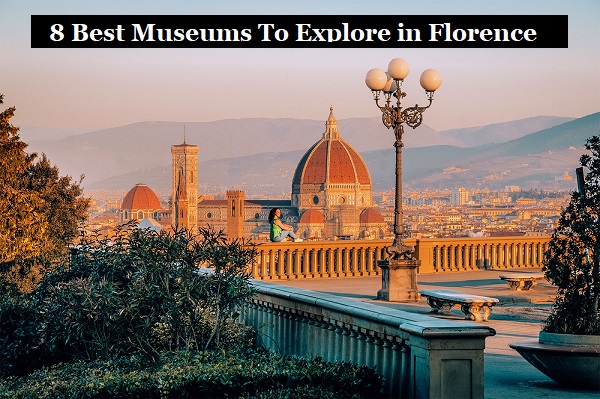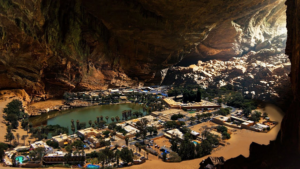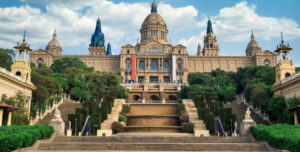8 Best Museums To Explore in Florence

Florence, a city steeped in rich history and cultural heritage, boasts an array of exceptional museums that offer an immersive journey through art, science, and history. The Uffizi Gallery stands as a pinnacle of Renaissance art, housing masterpieces by renowned artists. For those seeking Michelangelo’s iconic sculptures, the Accademia Gallery is a must-visit. Palazzo Vecchio exhibits remarkable frescoes and opulent architecture, while the Bargello National Museum showcases exquisite sculptures from various periods. The Pitti Palace, with its diverse museums and enchanting Boboli Gardens, presents an enticing ensemble of art and nature. Delve into the world of science at the Galileo Museum and Leonardo da Vinci Museum, celebrating the brilliance of these innovators. With a plethora of captivating options, Florence’s museums promise an unforgettable and enlightening experience for all.
- Uffizi Gallery:
The Uffizi Gallery, located in Florence, Italy, is a treasure trove of Renaissance art and culture. Home to an extensive collection of masterpieces from renowned artists like Leonardo da Vinci, Michelangelo, Botticelli, and Raphael, the gallery offers a captivating journey through history. Visitors can marvel at iconic works such as “The Birth of Venus” and “Primavera” by Botticelli, and Michelangelo’s “Tondo Doni.” The stunning architecture of the building itself adds to the allure of the experience. As one of the most visited museums in the world, the Uffizi Gallery remains a must-see destination for art enthusiasts and history lovers alike.
- Palazzo Vecchio:
Nestled in the heart of Florence, Palazzo Vecchio is an architectural marvel that reflects the city’s rich history. Serving as the town hall since the 14th century, this grand palace showcases a fusion of medieval and Renaissance design elements. Visitors can explore opulent chambers adorned with frescoes and sculptures, including the renowned Hall of Five Hundred. The intricately decorated Salone dei Cinquecento boasts significant artworks by Vasari and Michelangelo. Moreover, the tower provides panoramic views of Florence’s picturesque skyline. With its historical significance and awe-inspiring beauty, Palazzo Vecchio offers an unforgettable glimpse into the city’s past.
- Accademia Gallery:
The Accademia Gallery, situated in Florence, Italy, is a cultural gem renowned for its collection of world-famous sculptures and paintings. The gallery’s most celebrated exhibit is Michelangelo’s “David,” a magnificent marble sculpture depicting the biblical hero. The Accademia also houses an array of captivating religious art, including pieces by Giambologna and Botticelli. The collection provides visitors with insight into the artistic evolution of Florence during the Renaissance era. The gallery’s intimate setting allows for a closer appreciation of these masterpieces, making it an essential destination for art enthusiasts and anyone seeking to grasp the essence of Renaissance artistry.
- Bargello National Museum:
The Bargello National Museum, located in Florence, Italy, is a treasure trove of Renaissance art and history. Housed in a former medieval fortress, the museum showcases a remarkable collection of sculptures, including masterpieces by Michelangelo, Donatello, and Cellini. Visitors can immerse themselves in the artistic heritage of Florence while admiring the intricacy of the sculptures and the skill of the artists. The Bargello Museum offers a unique opportunity to witness the evolution of Italian sculpture and gain insights into the cultural and artistic significance of this iconic period in history.
- Pitti Palace:
As one of Florence’s most impressive architectural wonders, the Pitti Palace stands as a testament to the grandeur and opulence of the city’s historical rulers. Originally built for the Pitti family, it became the residence of the powerful Medici family and later served as the residence of the ruling House of Lorraine. The palace’s interior houses several museums, showcasing stunning art collections and period costumes. Surrounding the palace are the exquisite Boboli Gardens, a vast green oasis with beautiful fountains, statues, and breathtaking panoramic views of Florence, offering a tranquil escape from the bustling city.
- Boboli Gardens:
Nestled behind the Pitti Palace in Florence, Italy, the Boboli Gardens present an enchanting outdoor paradise that reflects the beauty and creativity of Italian Renaissance garden design. Spanning across expansive grounds, these meticulously landscaped gardens feature lush greenery, elegant sculptures, ornate fountains, and charming grottoes. Designed in the 16th century, the Boboli Gardens offer visitors a serene and captivating experience, as they wander along winding paths and discover hidden gems at every turn. These historic gardens continue to be a haven of relaxation and inspiration, drawing admirers from all around the world.
- Gucci Garden:
Gucci Garden, located in Florence, Italy, is a unique and luxurious museum dedicated to the renowned fashion house, Gucci. The museum showcases the brand’s evolution through the decades, celebrating its innovative designs and iconic creations. Visitors are treated to a captivating journey through fashion history, art, and craftsmanship, with exhibits displaying exquisite clothing, accessories, and contemporary art installations. Moreover, the museum houses a boutique with exclusive Gucci products, allowing fashion enthusiasts to indulge in high-end shopping. The Gucci Garden experience is a delightful fusion of culture and style, offering an immersive and elegant exploration of the brand’s legacy.
- Galileo Museum:
Nestled in Florence, Italy, the Galileo Museum pays homage to one of history’s greatest scientists, Galileo Galilei. This scientific treasure trove houses a rich collection of scientific instruments, artifacts, and manuscripts, showcasing Galileo’s pioneering contributions to astronomy, physics, and mechanics. Visitors can marvel at the original telescopes, globes, and compasses that Galileo used in his groundbreaking experiments. The museum also delves into the scientific advancements that followed, making it a captivating journey through the evolution of science. With its engaging displays and informative exhibits, the Galileo Museum offers a fascinating and educational experience, celebrating the genius of this influential Renaissance figure.








